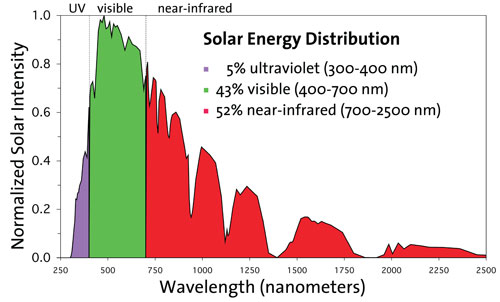Cool Roofs for Hot Projects
Building Programs and Codes
(Please note: this section was current at the date of publication. Please check with the individual code body or program for updates.)
Cool Roofs are Going Global
Increased recognition of the benefits of cool roofing has led to the adoption of cool roof measures in energy codes and the inclusion of cool roofing as part of green building initiatives across the country. Yet the outreach of organizations such as the Global Cool Cities Alliance (see case study) has expanded the discussion to a global audience, with several governments from Delhi to Montreal exploring cool roof policies. The European Union has formed the EU Cool Roof Council to promote cool roof awareness across Europe. The U.S. DOE has taken a lead by supporting cool roofs outreach to rapidly developing countries such as China and India, where the energy performance benefits can have substantial impacts on national energy consumption. Highlighted below is a cross-section of progressive programs and standards in use today, on the national, state and city levels.
Voluntary Green Building Programs
LEED®
The U.S. Green Building Council's LEED program provides certification for the energy and environmental design in the planning and construction of a building. From North Dakota to North Carolina architects are planning LEED buildings that can attain silver, gold or even platinum certification. The LEED program includes a credit for cool roofs under the Sustainable Sites category in recognition of the importance of urban heat island reduction, where to meet LEED Credit 7.2 a cool roof must have a minimum SRI of 78 for low sloped roofs and 29 for steep sloped roofs.
Green Globesâ„¢
The Green Building Initiative's Green Globesâ„¢ program is a green management tool that includes an assessment protocol and a rating system and guide for integrating environmentally friendly design into both new and existing commercial buildings. Green Globes provides credit for cool roofs as a component of their rating system, where the minimum SRI requirements are equivalent to LEED's standards.
Energy Codes
ASHRAE
National energy codes developed by the American Society of Heating, Refrigerating and Air-Conditioning Engineers (ASHRAE) are not mandatory regulations unless adopted by a jurisdiction as part of a regulation or law. Many states and cities have adopted either the ASHRAE or International Code Council codes or have adopted their own building codes. ASHRAE standards allow designers to reduce roof insulation when a cool roof surfacing material is used on the roof. ASHRAE 90.1, the Energy Standard for Buildings Except Low-rise Residential Buildings, section 5.3.1.1, defines cool roofs as having a minimum solar reflectance of 0.70 and a minimum thermal emittance of 0.75. The 2007 version of ASHRAE 90.1 adds an alternative of achieving a minimum SRI of 82. ASHRAE 90.1 only credits cool roofs in climate zones one, two and three, based on the DOE climate zones map.7 ASHRAE also produces an Advanced Energy Design Guide for Small Office Buildings and an Advanced Energy Design Guide for Small Retail. These guides provide suggestions for achieving greater energy savings than standard 90.1 and include the use of cool roofs.
 |
Solar energy distribution graph illustrating that infrared radiation makes up a large portion of the solar spectrum. Graph courtesy of LBNL Heat Island Group. |
Â

IECC & IGCC
The International Energy Conservation Code (IECC) provided by the International Code Council contains both prescriptive and performance measures for energy savings and references ASHRAE 90.1 in defining acceptable performance levels for cool roofs. The International Green Construction Code (IgCC) is a model energy code for commercial green building that can be modified and adopted worldwide. The IgCC specified a low sloped cool roof as a roof covering with a minimum aged solar reflectance of 0.55 and a minimum aged thermal emittance of 0.75, or a minimum aged SRI of 60. It defines a steep sloped cool roof as a roof covering with a minimum aged solar reflectance of 0.30 and a minimum aged thermal emittance of 0.75, or a minimum aged SRI of 25.









